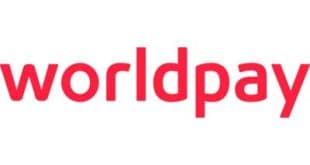As competitive pressure pushes processors and ISOs to find new sources for leads, research shows mainstream acquirers are becoming more and more active in both paid and organic search.
By Marc Abbey, Chris Sanson, and Meryl Dann
Though industry events such as the Durbin Amendment gave acquirer margins a shot in the arm, it is more generally true that competitive intensity in U.S. acquiring has been ratcheting up for some time now. Among other side effects, this competition resulted in pressure on sales and lead-source management, and acquirers became more innovative in how they source leads.
Our general hypothesis is that non-traditional lead sources are of increasing importance in the acquiring business. In January, we conducted research to help us understand, at the next level of detail, Internet search as a lead source.
Throughout January, we tracked the top three search results for a series of key acquiring-related search terms on Google for both organic search results as well as paid advertisements. Though far from a comprehensive ranking approach, which might have focused on other search engines and a broader set of search terms, this research approach nevertheless illustrated themes applicable broadly to search in the context of acquiring.
First, there was very little cross-over between the acquirers that ranked highly in organic search versus those that ranked highly in paid search. Most acquirers focused on one or the other, but not both. There were only a few exceptions (Authorize.net, PayPal, Merchant Warehouse).
This divide may result from the fact that paid and organic search require different skill sets and methodologies. Generating leads through organic search is largely a matter of being placed highly in the search results through search-optimization techniques. Google and other search engines use algorithms to rank search results, and though these algorithms are largely a black box, they are driven by such elements as keyword density on a site and the number of links to the site (e.g., variables a given acquirer can manage to influence search results), both externally and internally.
Therefore, highly ranked organic search is primarily a measure of the overall quality of the site relative to the search term. Paid search, on the other hand, is more a matter of identifying productive search terms, bidding appropriately through the search engine’s auction process, and having an effective landing page to convert clicks to leads.
Second, the organic search results were highly stable, whereas the paid research results differed substantially from day to day and week to week. Over the course of the study period, which was admittedly only a month, changes in the rank order of organic search results for a given search term were relatively rare. Paid search is much more volatile as it is driven by the bidding strategies of the advertisers. These can and did change every day and even intra-day.
The acquirers that ranked highly using either paid or organic search were overwhelmingly small independent sales organizations, whereas only a few large, mainline acquirers appeared highly in the results. TransFirst, Chase Paymentech, and First Data were the primary large acquirers; mid-size acquirers that ranked highly in our research included North American Bankcard and Merchant Warehouse. However, these players were exceptions and the overwhelming majority of companies were small ISOs or sales agents.
It is important, though, to keep in mind that, particularly in organic search, acquirers will use “doing business as” names and domain names intended to optimize search results. It can be very difficult to relate these DBAs to the parent company. It is possible that what appears to be a small ISO might be affiliated with a large player, in some cases.
Among the companies that were unambiguously ISOs, Wells Fargo ISOs represented the plurality of those that appeared in the tracking:
There is clearly quite a lot of dabbling in paid search, as well over 30 acquirers were ranked highly for at least one of the search terms for at least one day, though three acquirers were predominant, accounting for over half of the top-three-search-results/day combinations. The most highly ranked of these three acquirers is a Wells Fargo ISO called Flagship Merchant Services.
Organic search was not only stable but also more concentrated than paid search in the sense that a few acquirers accounted for a large percentage of the top-three-search-results/day combinations. Authorize.net, TransFirst, and Merchant Perfect accounted for nearly three quarters for the search terms in our research.
The search terms we used performed very differently from one another. According to statistics from Google, “credit card payment” had a low click-through rate relative to the other terms, with less than 1% of searches resulting in a click-through, though it had the highest number of searches among the search terms we used.
“Credit card acceptance” had the highest click-through-rate at 15%, perhaps reflecting that it is a narrower and more specific search term than “credit card payment,” which also returned issuers and debt-reduction companies, for example. In short, there were apparent trade-offs in search volume and click-through efficiency in the half dozen or so search terms we tracked.
Search engines such as Google provide advertisers with a cost-per-click value as an estimate of the advertising cost required to be the top paid-search result for a given keyword based on the total monthly searches and click-through rates. The cost-per-click an advertiser generally had to bid to stay in the top paid results was generally pretty consistent across the search terms we were tracking, with only a few exceptions.
The resulting return on investment for a given acquirer, however, is a more complicated equation, combining variables such as the total raw searches, the click-through rate, the cost per click, and then the ratio of clicks that become leads, applications, approved applications, and activated merchants.
The ultimate acquisition cost is very sensitive to small changes in the variables in this equation, but the beauty of paid and organic search is that it is very quantitative. It’s very possible to calculate specific returns on investment, which is not unlike campaign management on the consumer-issuing side of the business.
In summary, our research painted a picture of a specialized lead source that is not yet fully mainstream and is dominated by aggressive and entrepreneurial players. There was enough evidence of concerted efforts by a handful of the large acquirers to conclude, however, that Internet search is likely rising and not declining as a component of the marketing mix and lead-source management strategies of mainstream acquirers.
Chris Sanson and Meryl Dann are senior analysts in the Acquiring Practice at First Annapolis Consulting Inc. Marc Abbey is the managing partner of First Annapolis and is also responsible for the Acquiring Practice.





